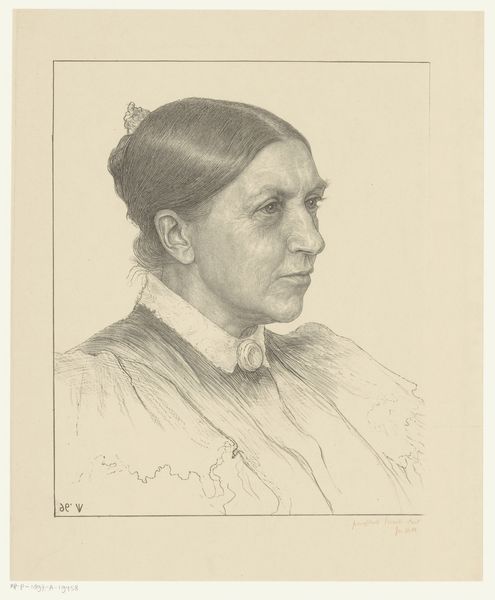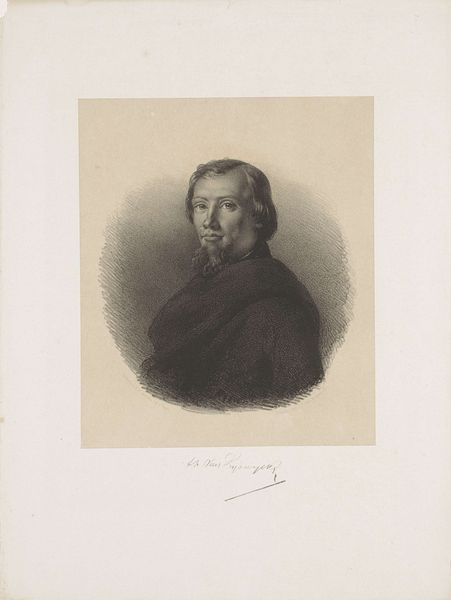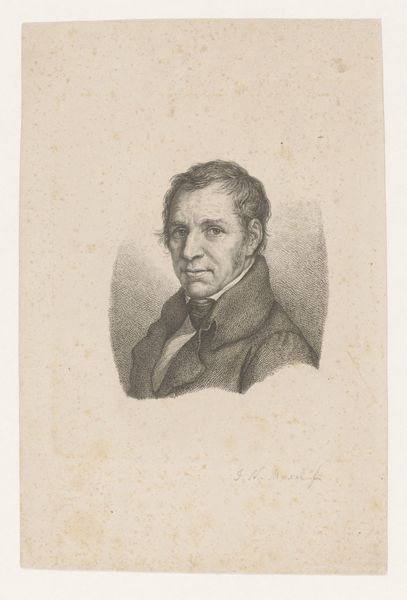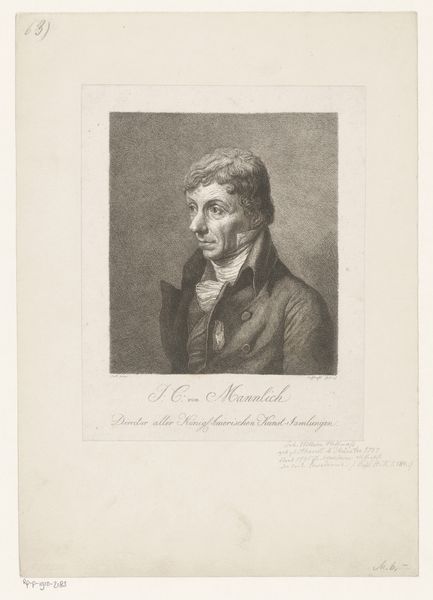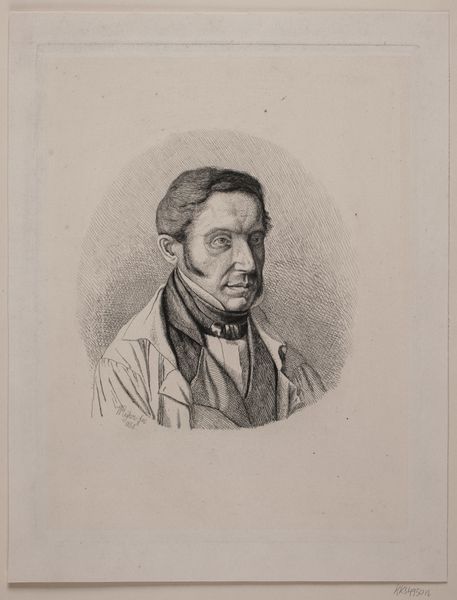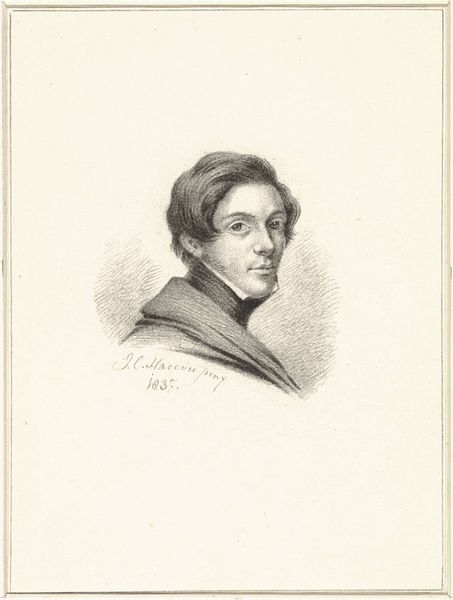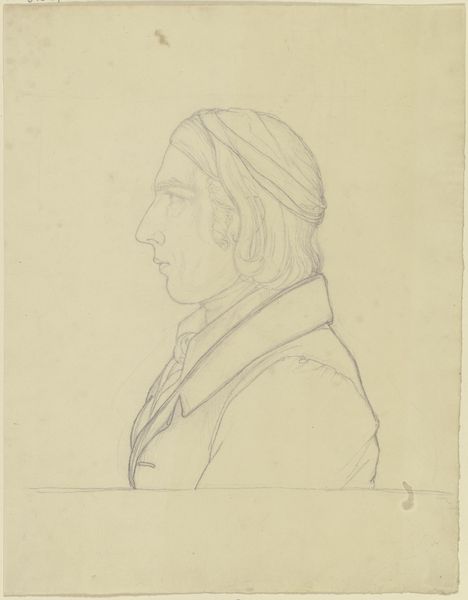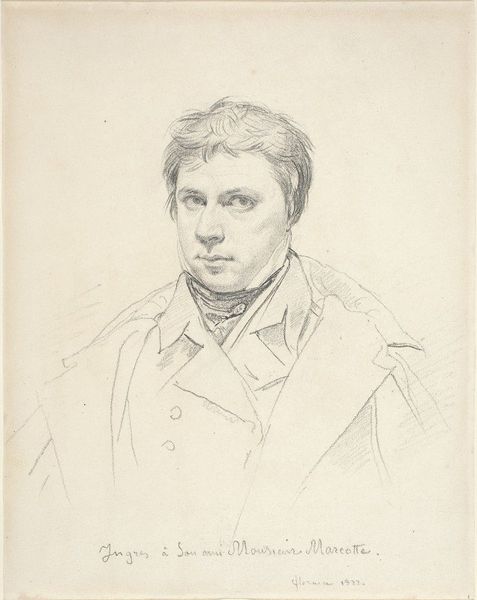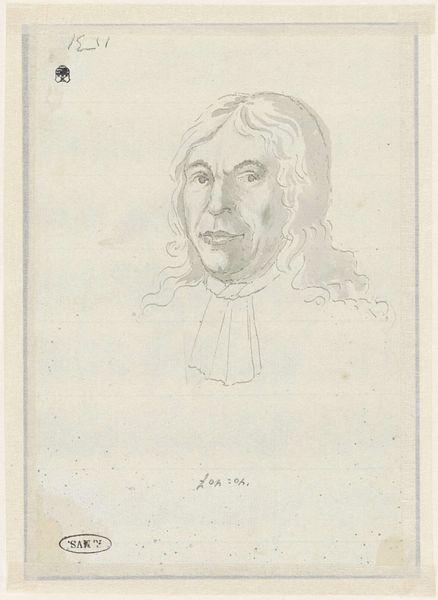
drawing, pencil
#
portrait
#
pencil drawn
#
drawing
#
amateur sketch
#
toned paper
#
facial expression drawing
#
light pencil work
#
pencil sketch
#
portrait reference
#
pencil drawing
#
romanticism
#
pencil
#
portrait drawing
#
pencil work
#
realism
Dimensions: height 152 mm, width 138 mm
Copyright: Rijks Museum: Open Domain
Editor: This is Taco Scheltema's self-portrait from 1800, rendered in pencil. There's a remarkable stillness to the image; a quiet, contemplative mood seems to emanate from it. What compositional elements stand out to you in this piece? Curator: Note the artist's meticulous use of line and shading. Observe how the light gently falls across his face, defining the planes and creating a sense of volume, without overwhelming the overall texture. The cross-hatching is quite subtle, isn't it? The artist masterfully renders textures of both the face and drapery using only pencil. Editor: Yes, it's the subtlety that strikes me! Nothing feels overstated. The almost uniform tonality is captivating. Does the relatively simple palette add or detract from the portrait's overall effect? Curator: A reduced palette often redirects attention to the pure forms and values. Without the distraction of color, one can fully appreciate the artist's handling of line and shadow. It's a showcase of tonal gradations to sculpt form. Consider how Scheltema exploits these minimal tools to suggest depth. Editor: So, the artist's careful control emphasizes the simplicity and formal purity. Would you say this aligns with a specific artistic movement or principle? Curator: It is reminiscent of aspects within the Romantic era. Think of how the delicate light evokes a serene introspection aligned with romantic portraiture, especially regarding the intense, focused gaze that embodies the movement’s spirit. Editor: I hadn’t thought of it that way, but that makes perfect sense. Seeing the interplay of technique and movement enriches my understanding immensely. Curator: Precisely. Formal analysis offers new readings through attention to material and structure, doesn't it?
Comments
No comments
Be the first to comment and join the conversation on the ultimate creative platform.

